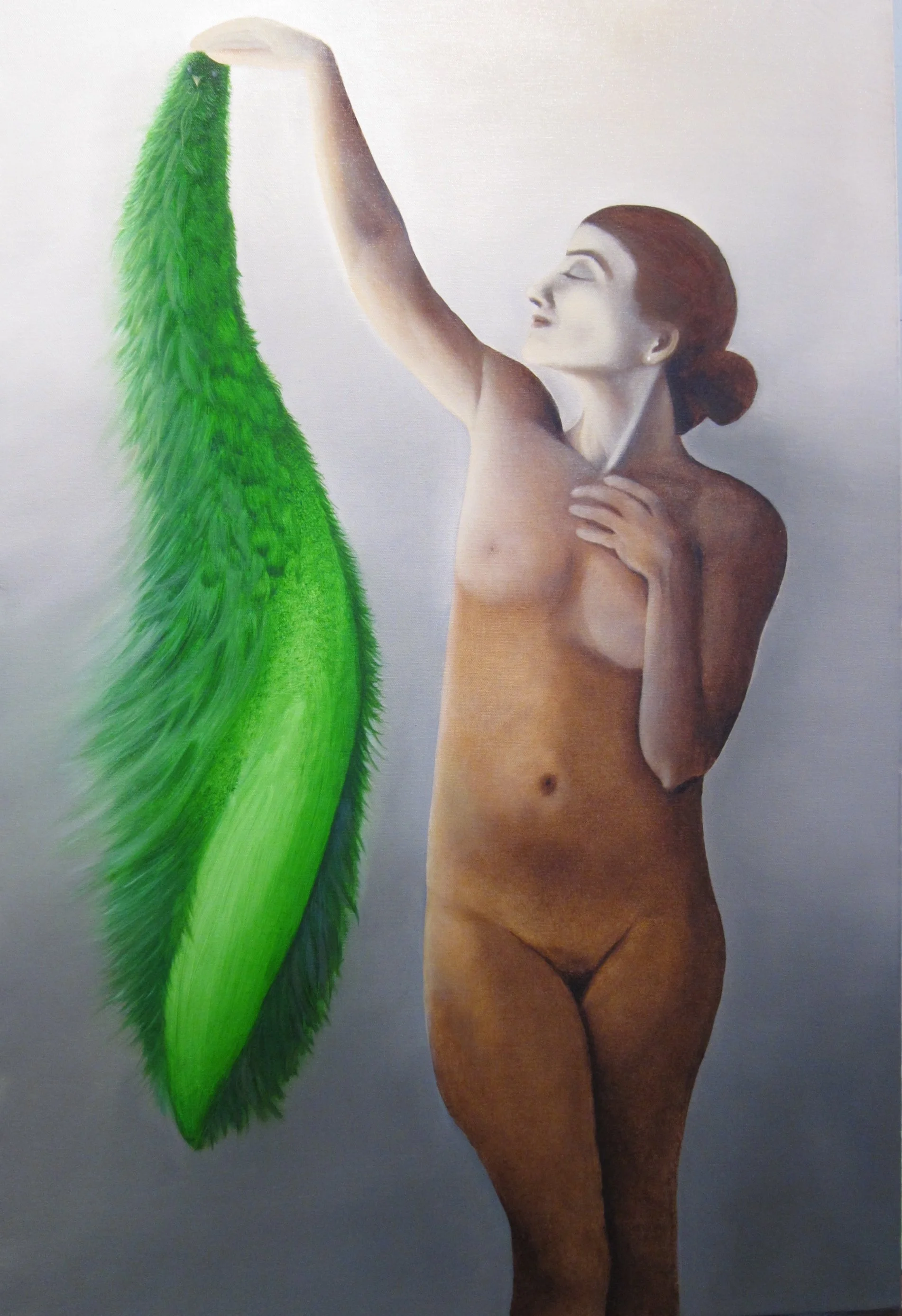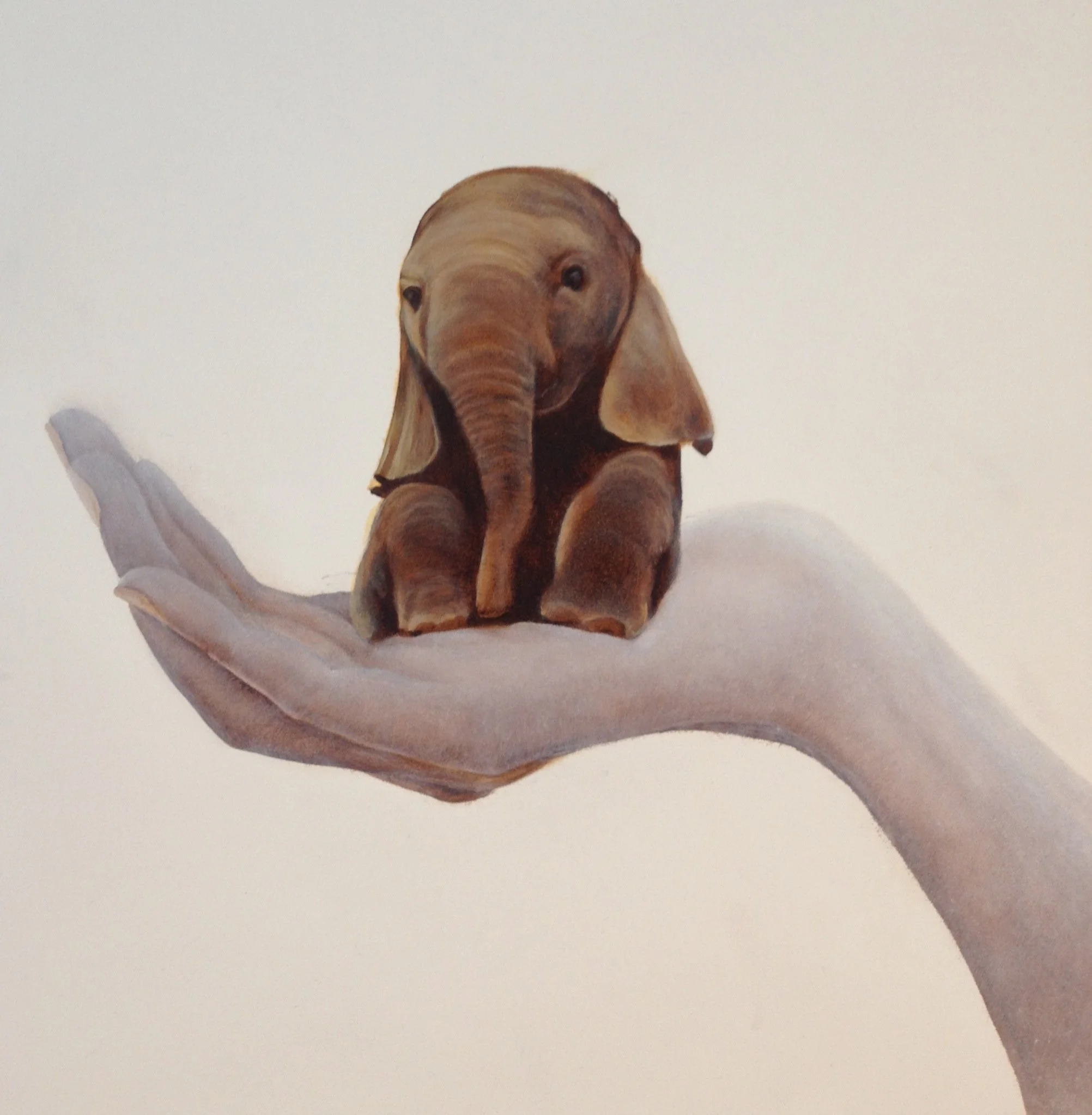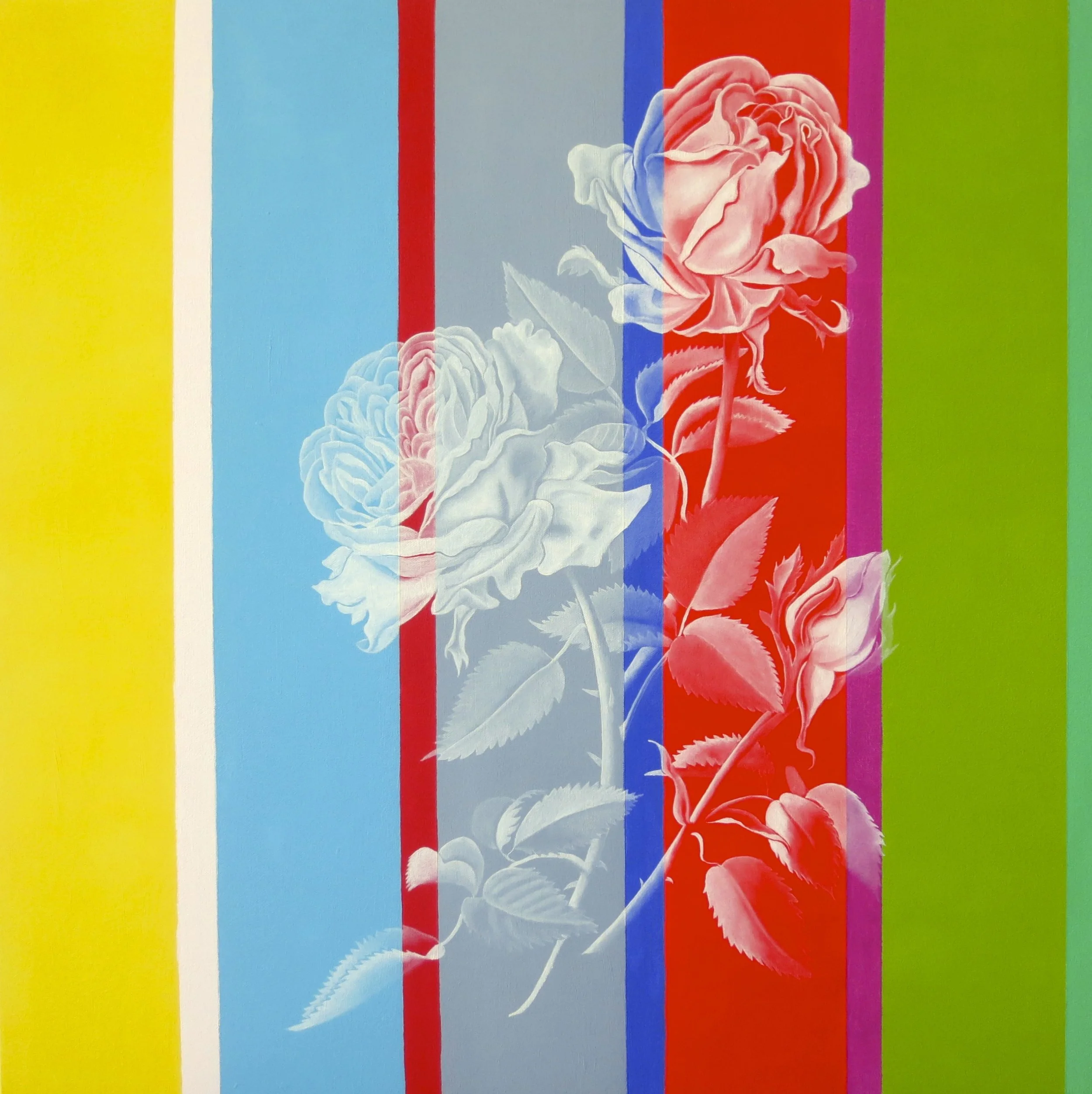


































































Figurative
Krista Augius – Figurative Painting: Style, Method & Technique
Krista Augius’s figurative work is rooted in a timeless engagement with the human form, yet rendered through a contemporary lens that blurs the line between realism and the symbolic. Her style is characterized by a quiet intensity—compositions that hold emotional weight through gesture, posture, and the subtle interplay of light and shadow.
Augius employs traditional techniques with a modern sensibility, often working in layers using the Mische technique—a historic method combining tempera and oil glazing that allows for remarkable depth, luminosity, and control. This process gives her figures a sense of presence that feels both grounded and ethereal, as though they inhabit a space between the physical and the psychological.
Her approach is deeply intuitive yet informed by anatomical precision with her background as a doctor and classical training of the Mische technique from teachers Robert Venosa and Martina Hoffmann. She often situates her subjects in minimal or symbolic environments, allowing the human form to serve as a vessel for introspection, vulnerability, and transformation. The figures are not portraits in the traditional sense, but rather archetypes—mirrors of the inner world—inviting the viewer into a space of contemplation.
Augius’s figurative paintings are a synthesis of discipline and spontaneity, of technical mastery and poetic expression. They speak to the enduring power of the human image to communicate what words cannot.
The Colors of Flower
This floral series centers on the rose—long regarded as a symbol of beauty, mystery, and the highest energetic vibrational frequency found in nature. The Colors of Flower concept was born from a deep observation of the extraordinary complexity in the hues required to truly capture a single bloom. To explore this visually, the pigments traditionally used to depict the flower are abstracted into vertical stripes in the background, while the flowers themselves are rendered in the absence of color—inviting the viewer to sense their presence beyond the visible spectrum.
The rose becomes not just a subject, but a portal into broader themes of energy, form, and transformation. Drawing on the Mische technique, the paintings delve into the layered depths of floral structure, while spirals and geometric patterns in the background evoke the spiral of life—a reference to the Fibonacci sequence and the sacred geometry inherent in natural growth.
This series is a meditation on nature’s “complex simplicity”—where mathematical precision and organic beauty coexist. It invites collectors to engage with works that are both visually compelling and conceptually rich, offering an interplay of color, structure, and spiritual resonance.